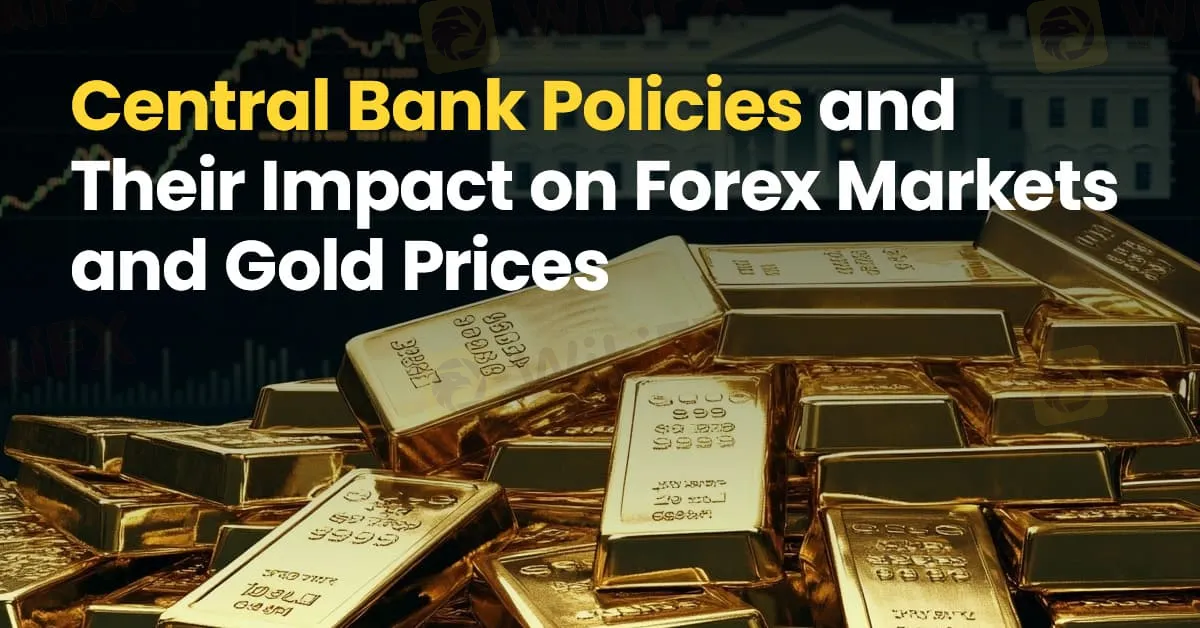简体中文
繁體中文
English
Pусский
日本語
ภาษาไทย
Tiếng Việt
Bahasa Indonesia
Español
हिन्दी
Filippiiniläinen
Français
Deutsch
Português
Türkçe
한국어
العربية
Central Bank Policies,Forex Markets and Gold Prices
Abstract:Central banks play a pivotal role in shaping global economic landscapes. Their policies—ranging from interest rate adjustments to quantitative easing—directly influence both forex markets and the price of gold. As major players, central banks not only aim to stabilize their economies but also inadvertently set off a chain reaction in the trading world.

Introduction
Central banks play a pivotal role in shaping global economic landscapes. Their policies—ranging from interest rate adjustments to quantitative easing—directly influence both forex markets and the price of gold. As major players, central banks not only aim to stabilize their economies but also inadvertently set off a chain reaction in the trading world.
The Role of Central Banks in Forex Markets
Central banks control monetary policy, which is key to managing inflation and fostering growth. When a central bank adjusts interest rates, it affects a countrys currency value. Higher interest rates often attract foreign capital, leading to an appreciation of the currency. Conversely, lower rates can weaken a currency, as investors seek better returns elsewhere. Traders in the forex market closely monitor these decisions to capitalize on expected movements.
Moreover, policies such as quantitative easing—where central banks purchase government securities—can flood the market with liquidity. While this approach supports economic growth, it may also devalue the currency, increasing volatility in forex markets.
Impact on Gold Prices
Gold has long been considered a safe-haven asset, particularly during times of economic uncertainty or when central bank actions hint at potential instability. When currencies fall in value due to loose monetary policies, investors often flock to gold as a store of value. As demand increases, so does the gold price. Conversely, when strong central bank policies lead to robust economic conditions and stable currencies, the allure of gold may diminish, leading to lower prices.
Conclusion
Central bank policies are a double-edged sword—they provide necessary economic support while also triggering significant shifts in forex markets and gold prices. Traders and investors must therefore remain vigilant, keeping abreast of policy announcements and economic forecasts to navigate the interconnected realms of currency and precious metal markets successfully.

Disclaimer:
The views in this article only represent the author's personal views, and do not constitute investment advice on this platform. This platform does not guarantee the accuracy, completeness and timeliness of the information in the article, and will not be liable for any loss caused by the use of or reliance on the information in the article.
Read more

Forex Success Stories: Lessons You Can Use to Win
There can be many ups and downs even for the world’s best forex traders. However, they remain undeterred in their vision to overcome the challenges that come their way. That’s why they form part of forex success stories that continue to inspire generations. One can inherit some lessons to be among successful currency traders. In this article, we will be sharing the lessons you can use to be successful in forex trading.

Forex Trading Signals - Your Gateway to Profitable Currency Trading
Want actionable forex trade recommendations or ideas for currency pair purchase or sale? Forex trading signals provide you with the same. Generated by professional traders, algorithms or trading systems, these signals help traders make informed decisions. Learn more about in this in-depth guide.

Top 5 Day Trading Forex Strategies That Can Help Elevate Your Wealth
Want to enjoy the thrill of forex day trading, where you open and close currency pair positions within the same day? Want to benefit from small market movements while avoiding overnight funding expenses? You need to understand day trading forex strategies. In this article, we will inform you about these and their implications.

Exploring the Benefits of Forex Investments
The Indian forex market is $60 billion strong, courtesy of the belief that it yields significant returns for investors over time. The visually impressive technical analytic tools give investors an insight into the market behavior. Assessing it through varying currency price movements helps them take an informed call on position and account sizes. Explore this article to know the benefits of forex investments in greater detail.
WikiFX Broker
Latest News
Euro zone inflation holds steady at higher-than-expected 2% in July
Forex Success Stories: Lessons You Can Use to Win
Scam Alert: FCA Issued Warning! Check the List of Unauthorized Brokers Below!
FCA Forex Trading Regulations Explained – What Every Trader and Broker Must Know
FIBO Group: A Closer Look at Its Licenses
Making Money with Forex Weekend Trading
Interactive Brokers Expands Forecast Contracts to Europe
Robinhood Gains 2.3M New Accounts, Platform Assets Close to $280B
CVS shares pop on earnings beat and outlook, as retail pharmacy and insurance units improve
CNBC's Inside India newsletter: Why an India-U.K. trade deal does not make U.S.-India agreement any easier
Currency Calculator


